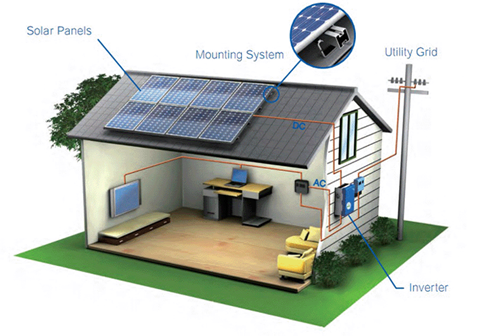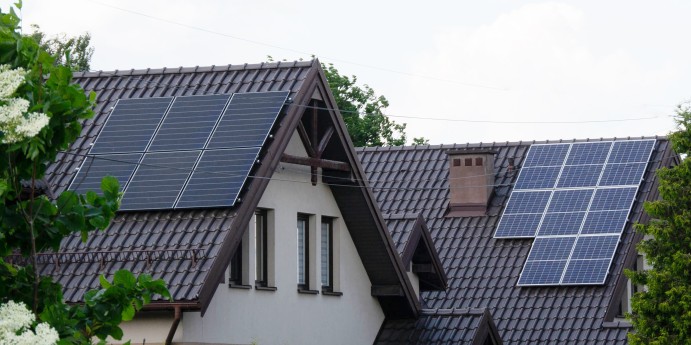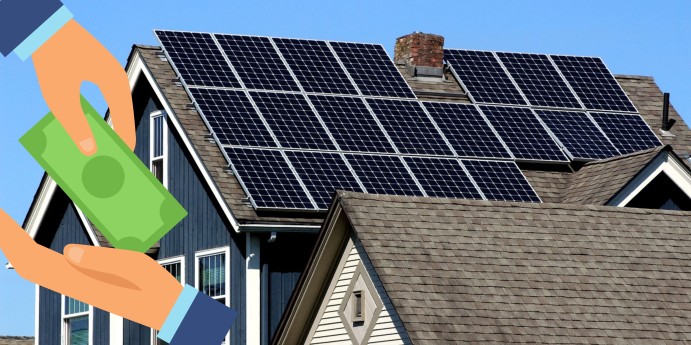Solar energy production and its significance are factors, in addressing energy challenges and environmental concerns. With a growing emphasis on energy sources, it is crucial to grasp the fundamentals of how solar energy is generated. This piece delves into the essentials of power covering its production process, benefits, limitations, and, potential impact on the residents of the United States.
Solar energy captures sunlight and heat from the sun to create a renewable energy source in diverse regions globally. The USA, notably states like Arizona, Nevada, New Mexico, Texas, and California benefits from resources due to their extended periods of sunlight exposure, but this may not be that applicable for lots of other states of the United States.
Photovoltaic (PV) systems stand out as predominant in energy generation methods within the USA representing, over 95% of solar systems. These systems efficiently convert sunlight into electricity using panels.

Solar panels based on silicon wafers absorb sunlight to release electrons and generate DC electricity. In turn, inverters transform DC electricity into alternating current (AC) which is ideal, for powering homes and businesses.
Adopting solar energy reduces dependency on limited fossil fuels, which in turn lowers greenhouse gas emissions. Cleaner air and a healthier environment are promoted by solar power plants since they generate electricity without releasing any pollutants into the atmosphere.
Solar energy presents a viable means of reducing electricity expenses, particularly in regions marked by high utility rates. Additionally, federal and state incentives, such as the expanded Solar Investment, Tax Credit (ITC), render solar installations more financially accessible to homeowners and businesses.
Although solar energy in the US is good, certain parts of its northern region get less sunlight than their southern counterparts. This variance in geography necessitates bespoke approaches toward utilization of solar energy.
However, even with substantial reductions in cost over the years, many consumers consider these upfront costs as a possible barrier to entry. Nonetheless, the long-term economic returns usually surpass the initial investment cost.
The problem is we can’t store much solar power at night. Until we have better ways to save this energy, it will be difficult to connect many big solar systems to the power grid.
The estimates show a huge reliance on solar energy in future efforts toward electricity production. In the United States, the Department of Energy projects that solar will become the dominant source of new electric capacity added to the grid by 2025, indicating its fundamental role in shaping America’s energy mix.
Solar energy offers a promise for sustainable sources of power. Sunlight availability in abundance, profitability, and environmental advantages means that it will alter completely how we produce electricity. As adoption rates escalate towards renewable energy as its trajectory continues, innovation together with policy backing will drive a greener and more resilient future for United States citizens through solar power.
- Is the sun’s energy free?
Though sunlight is free (because it comes from light), the infrastructure and systems needed for converting this into electricity are not.
2. Can I utilize solar energy on cloudy days?
On a dull day, photovoltaic panels operate with lesser efficiency but still generate power although at a reduced rate.
3. Do solar panels need to be maintained?
For optimum performance of solar panels, there is a need for regular inspections and cleaning. Nonetheless, they generally require little upkeep.
4. How do solar panels affect home values?
Research has shown that houses fitted with solar panels have higher selling prices as indicated by savings on electricity bills and being environmentally sound.
5. What happens when too much electric current is produced by these devices?
Another way to deal with this problem is through battery storage. This means saving excess sunlight and using it at night or during darker periods. It forms one option among many others, for instance, net metering schemes where customers sell back excess energy to their utilities through the grid; or they just give away their surplus to other households in adjacent locations.
Ready to make the switch to solar energy? Contact SunLife today to explore your options and take the first step towards a sustainable future. Call us at +1 8334786669 or visit our website https://sunlifenow.com/ for a free consultation with our experts.
 833-478-6669
833-478-6669



